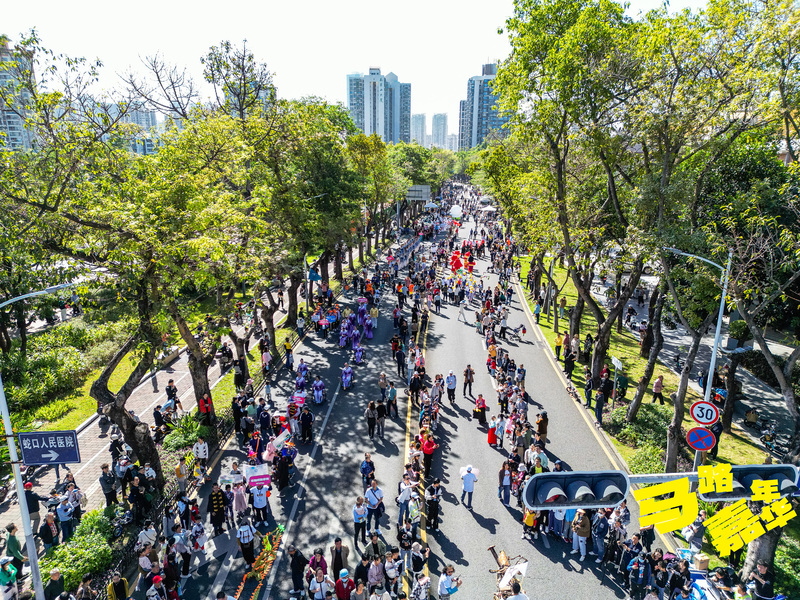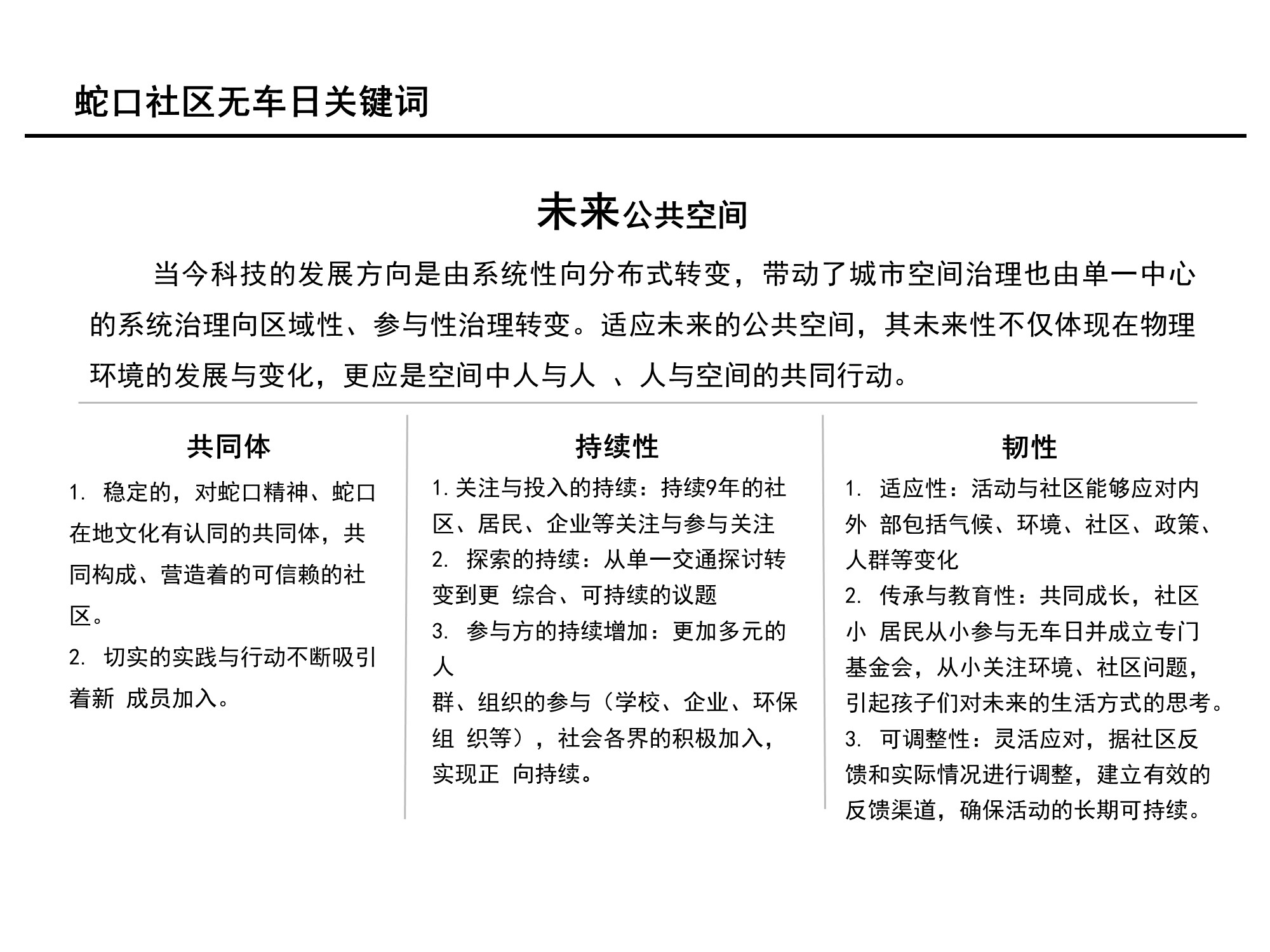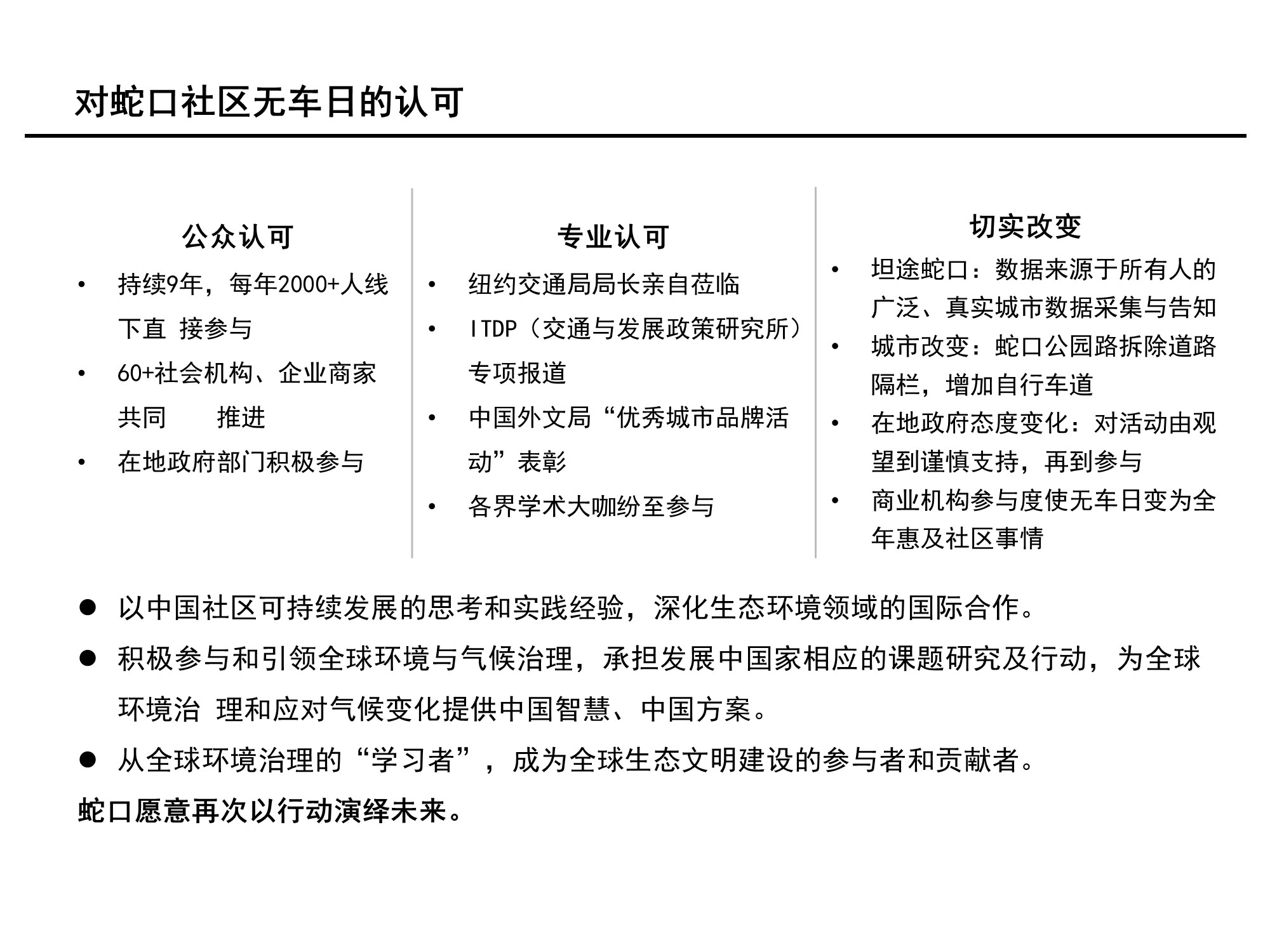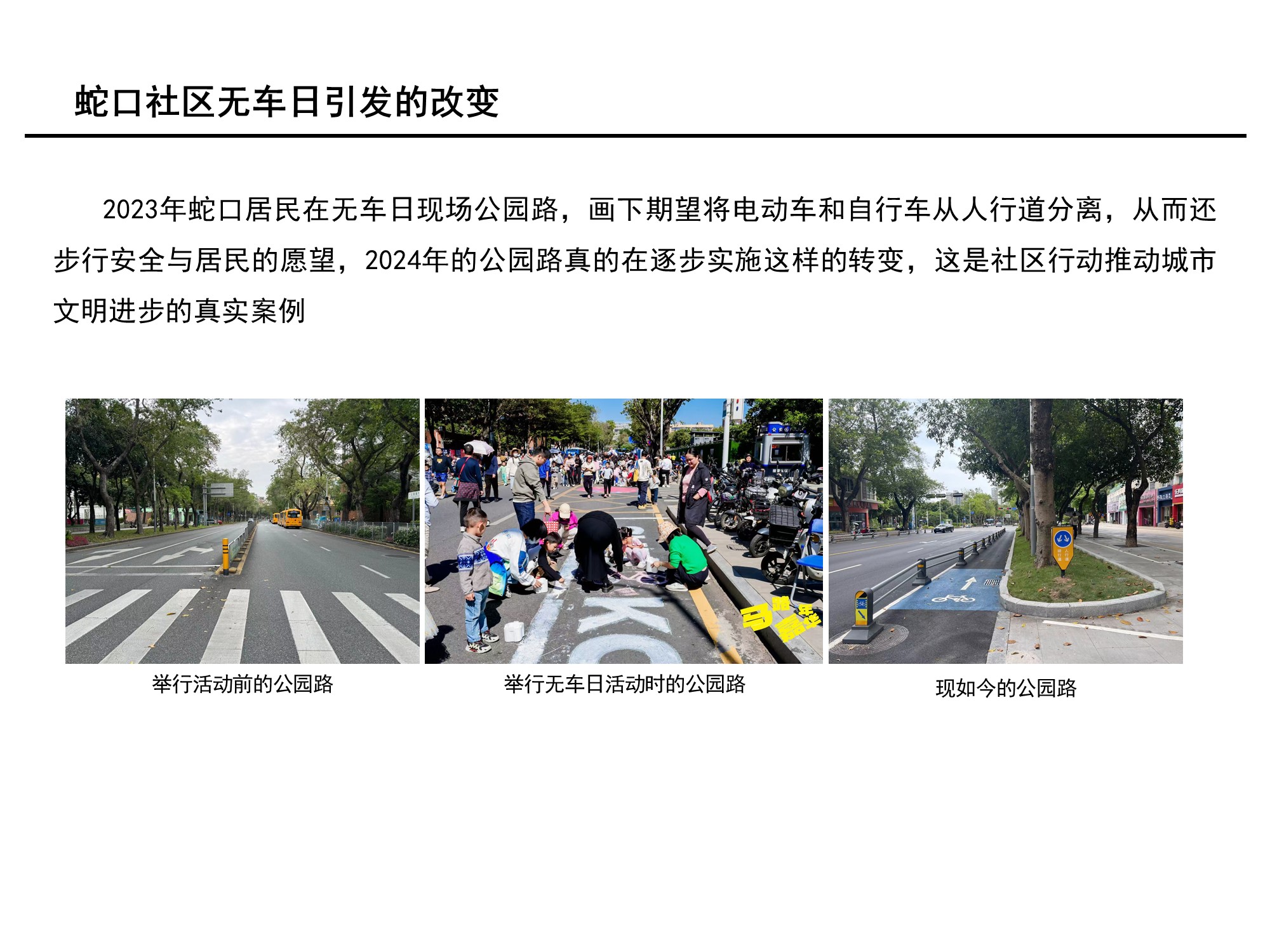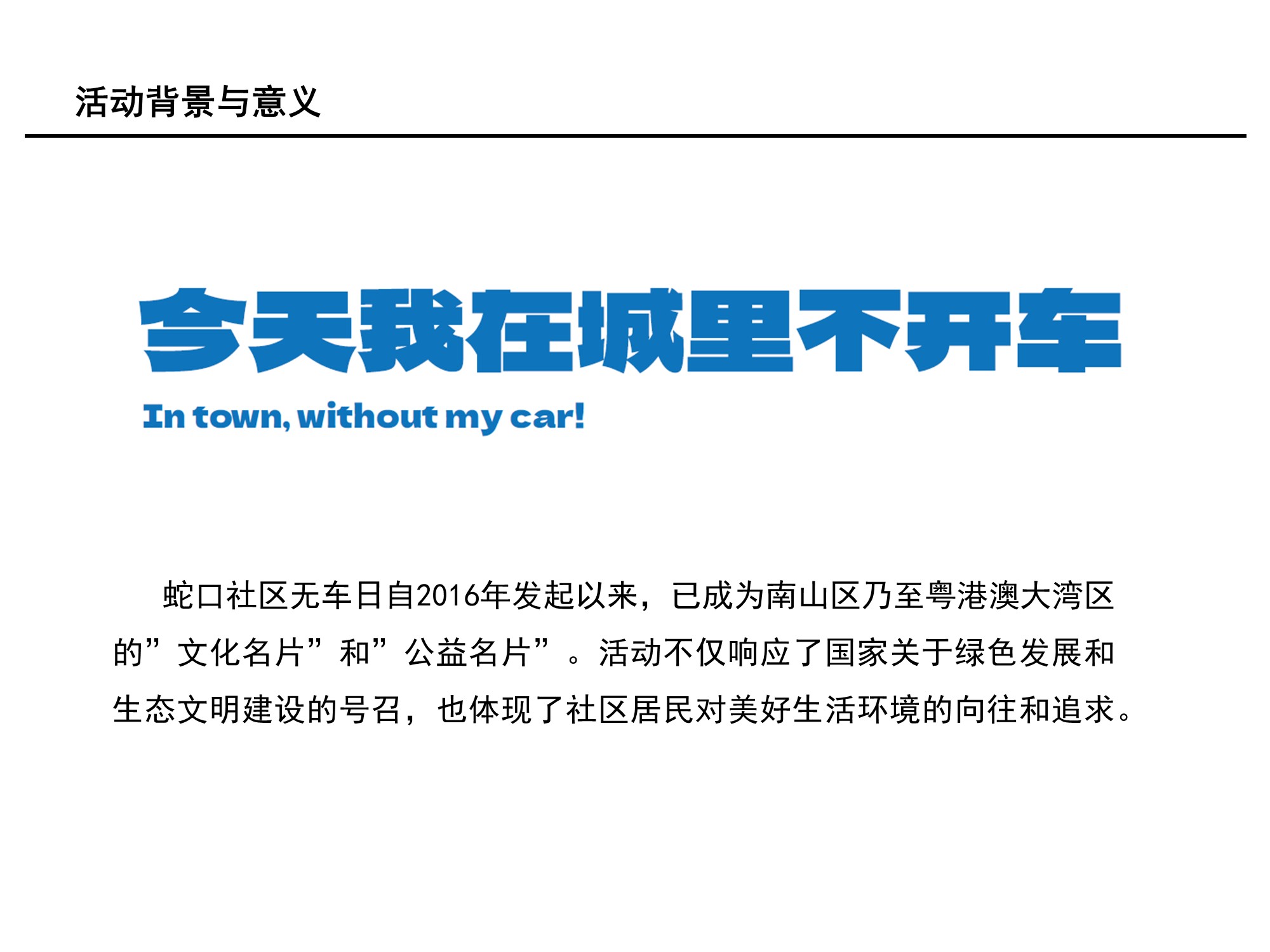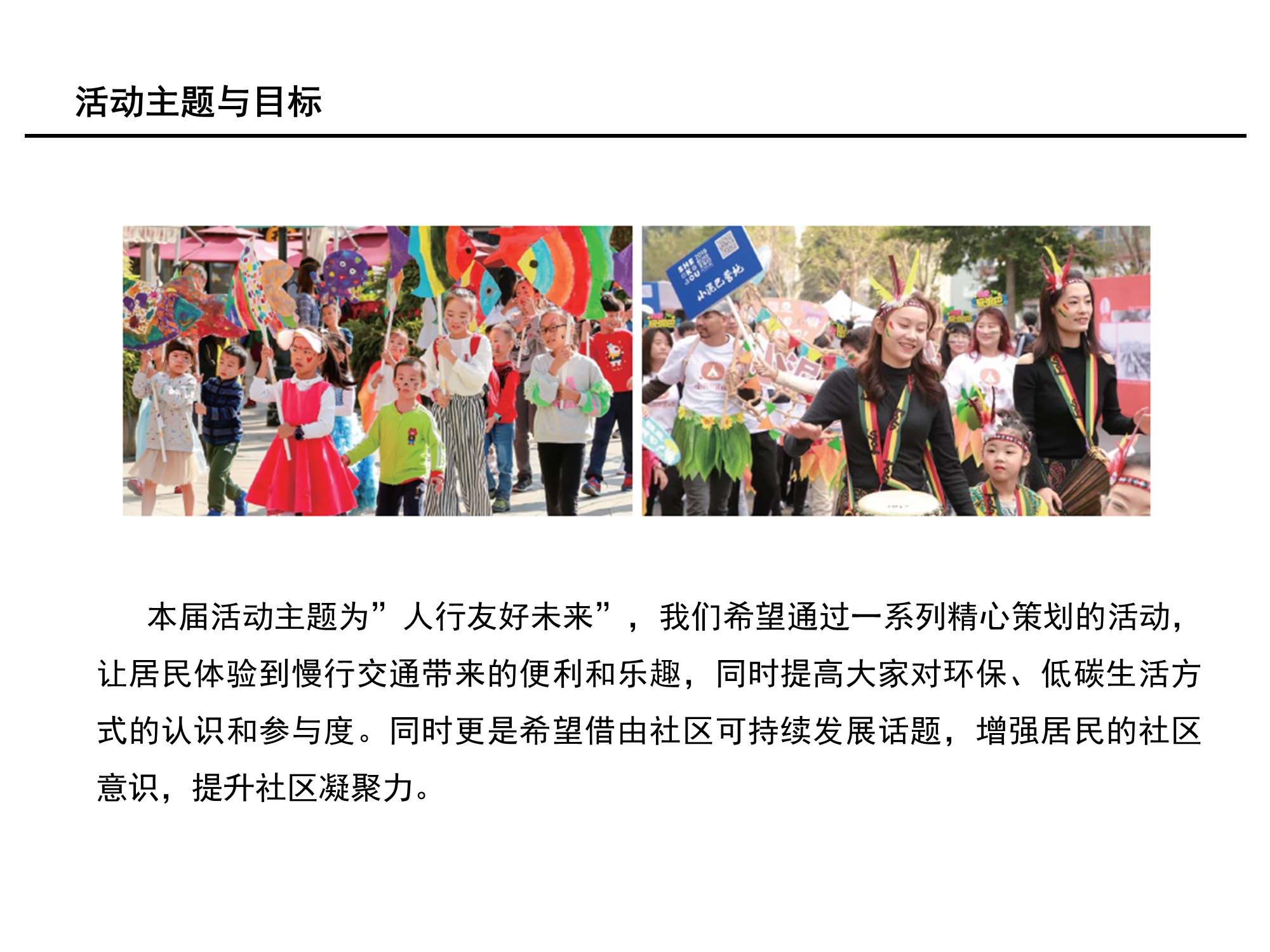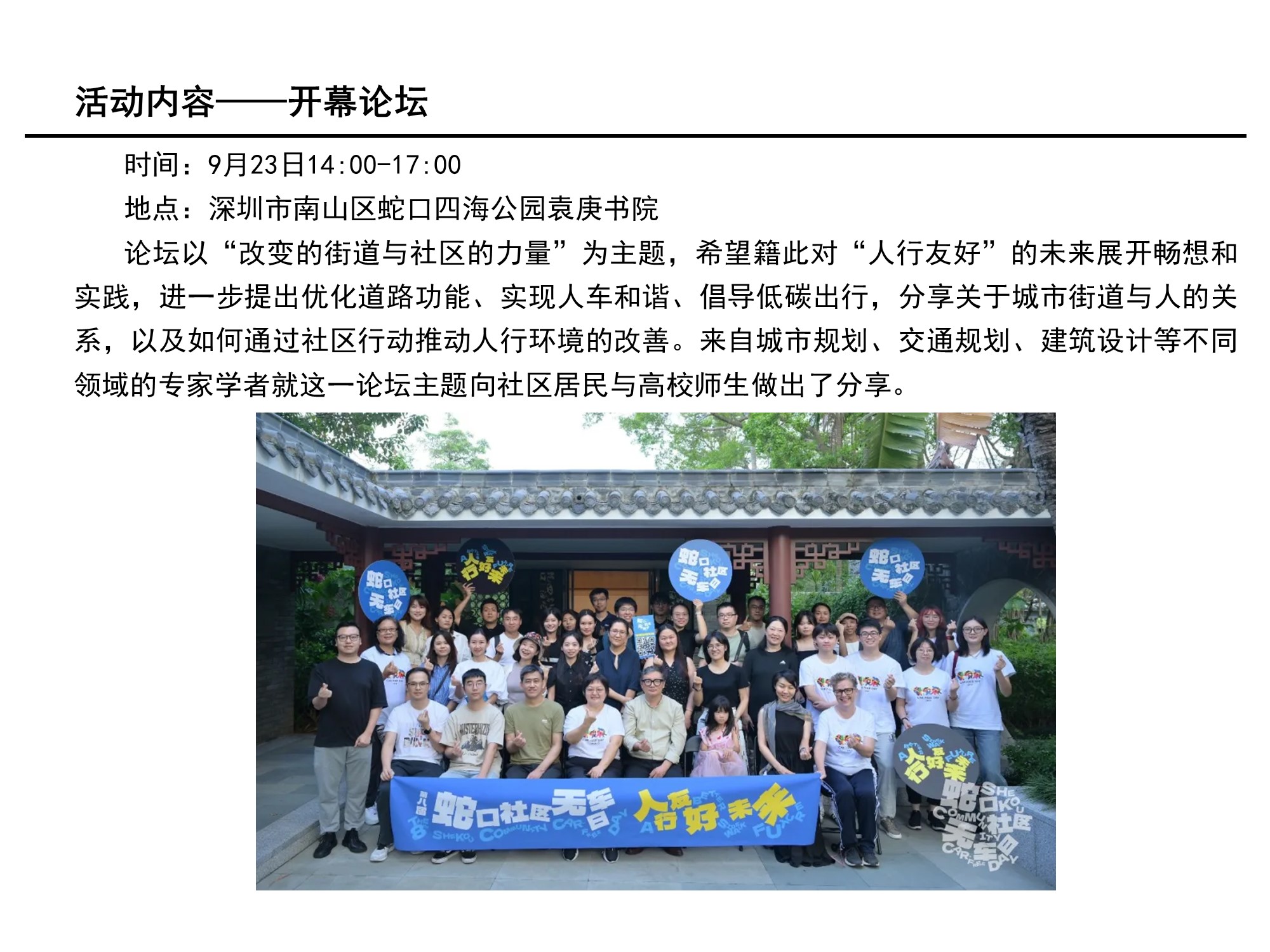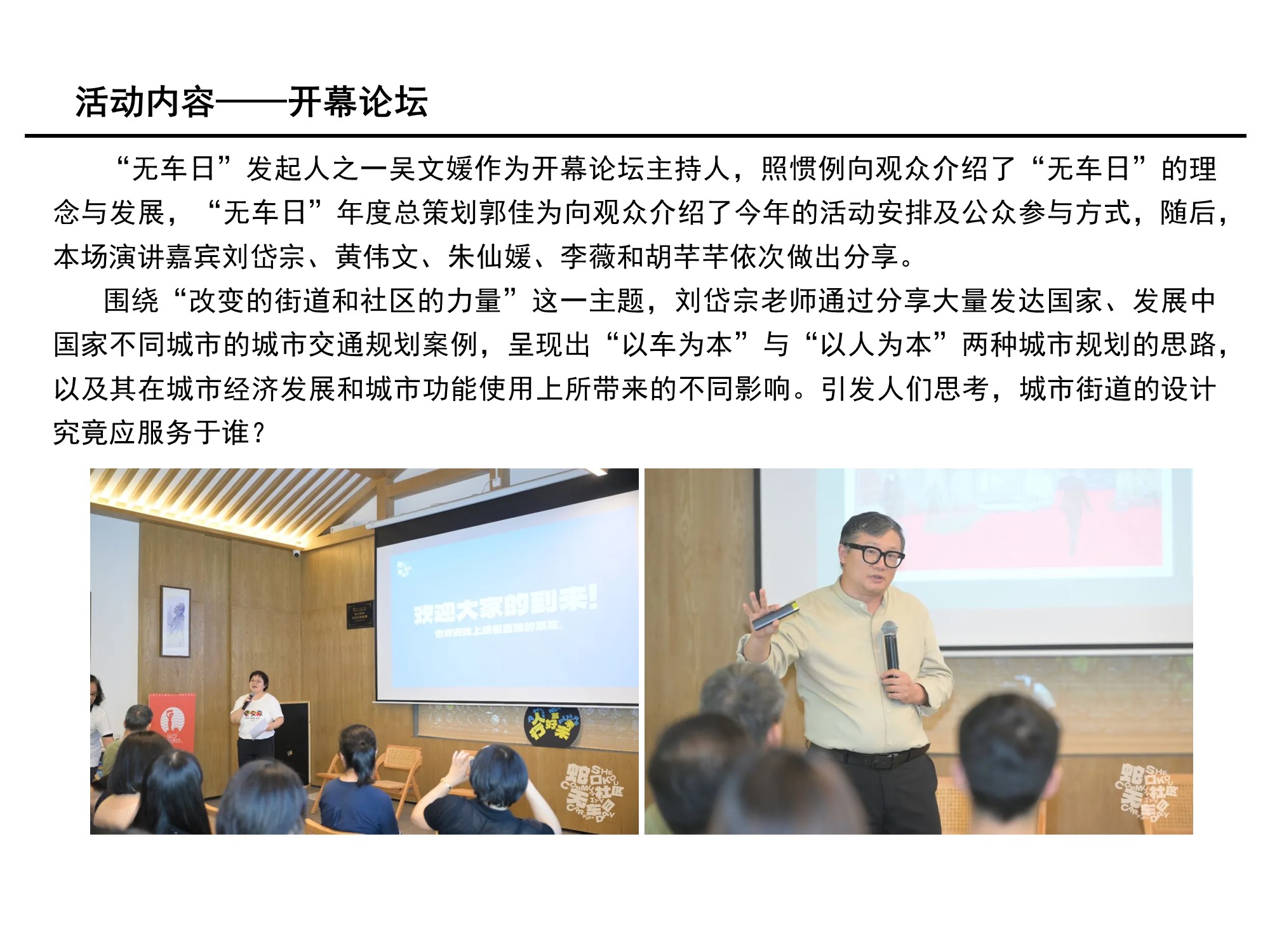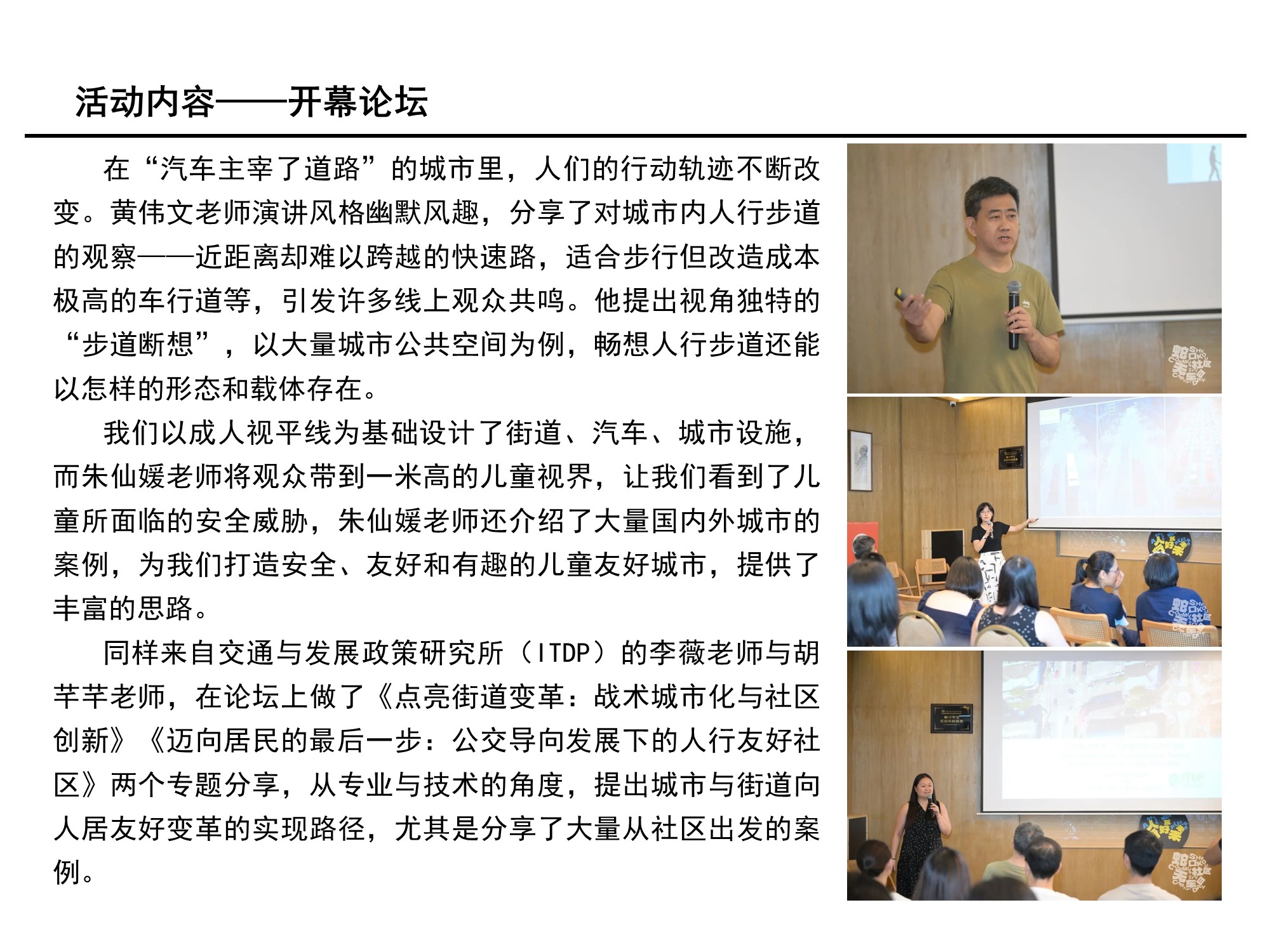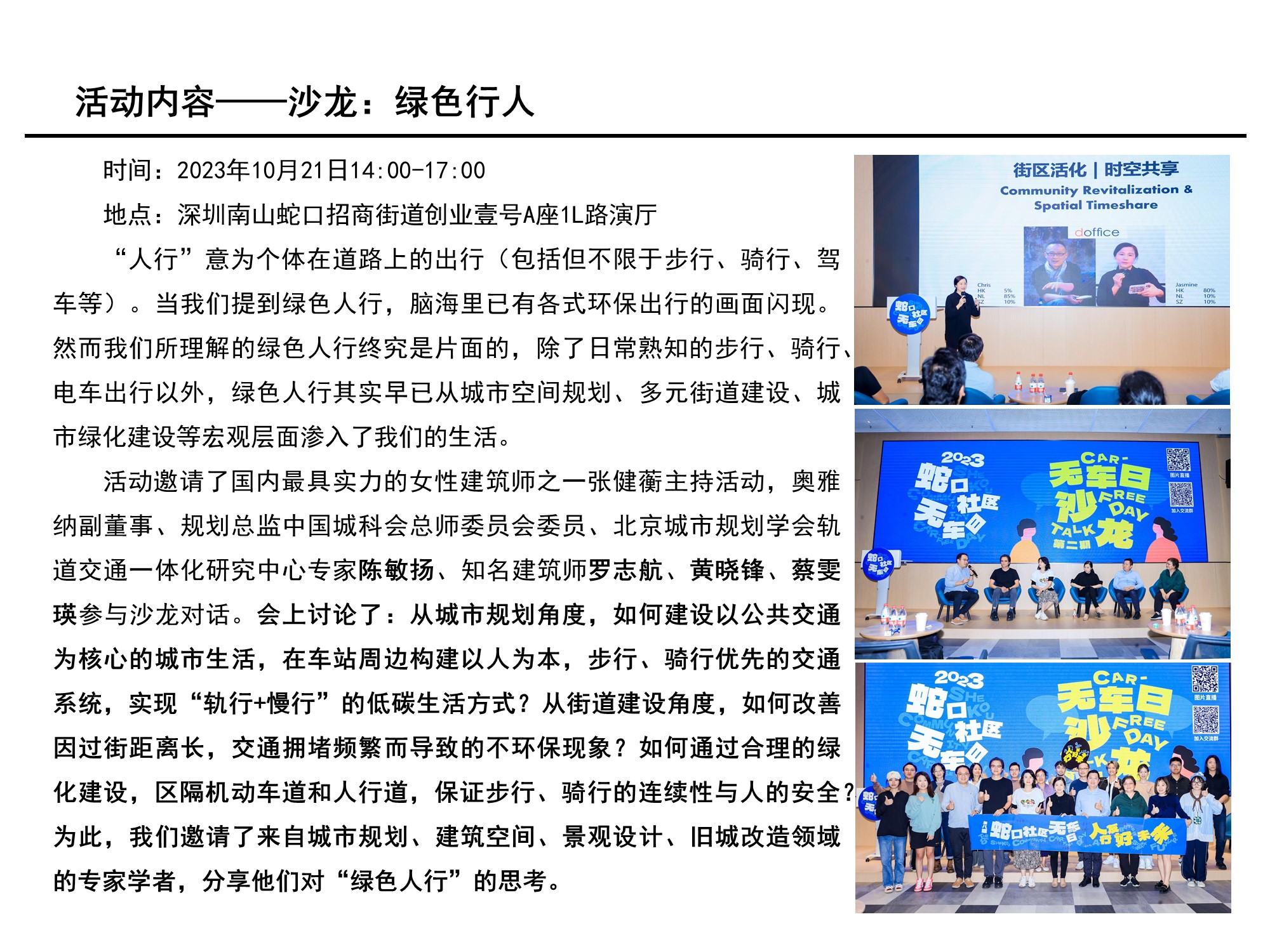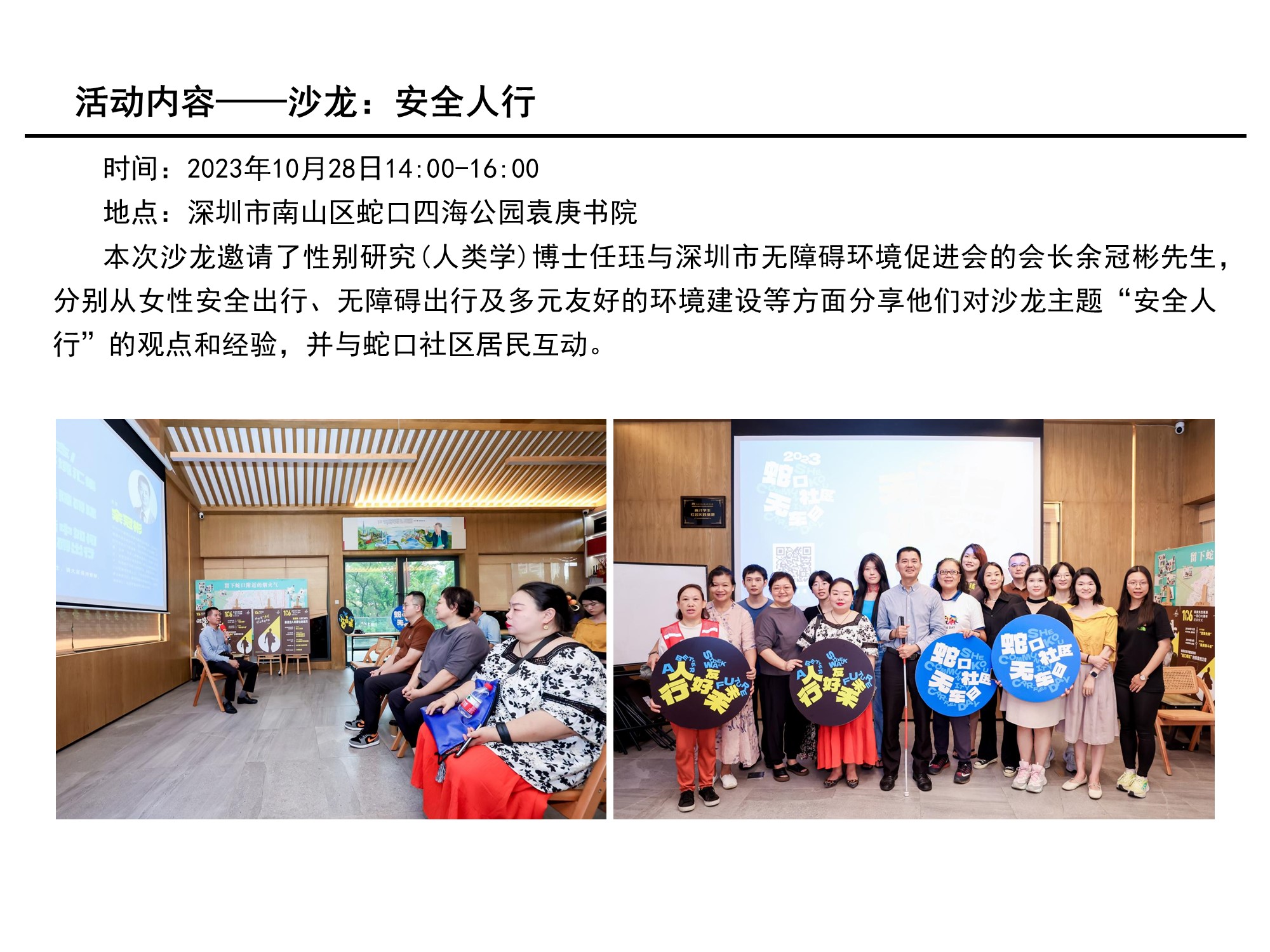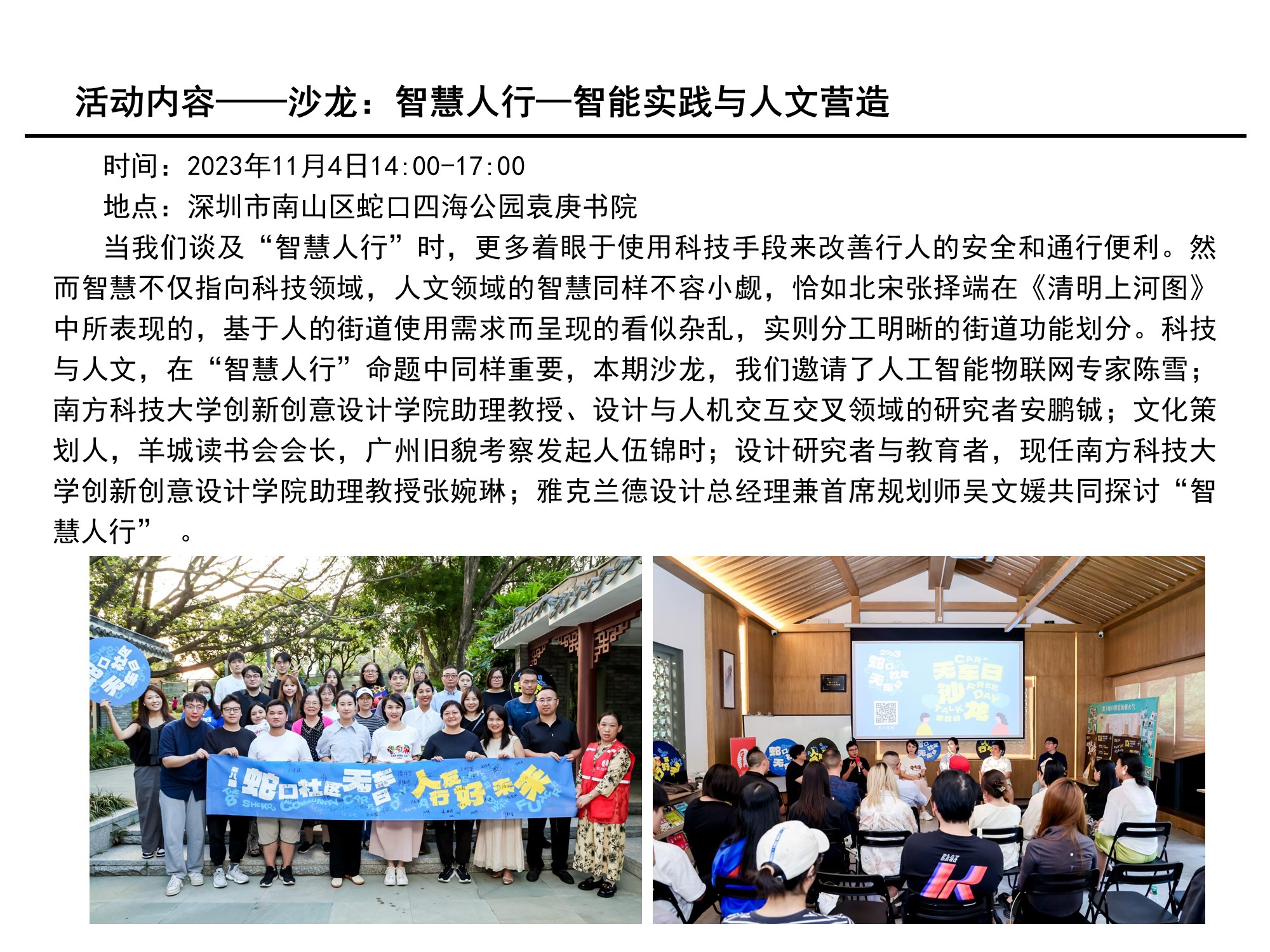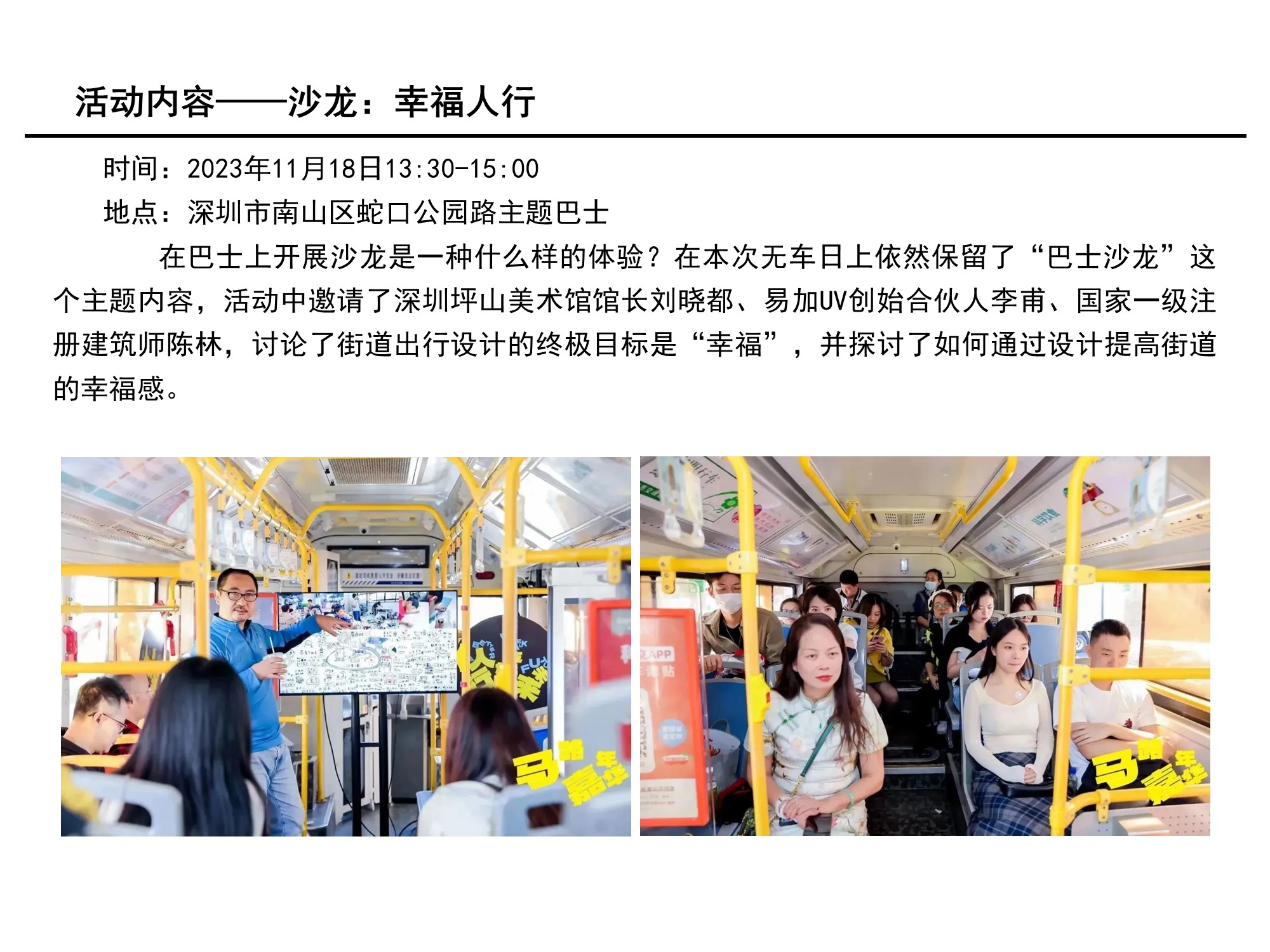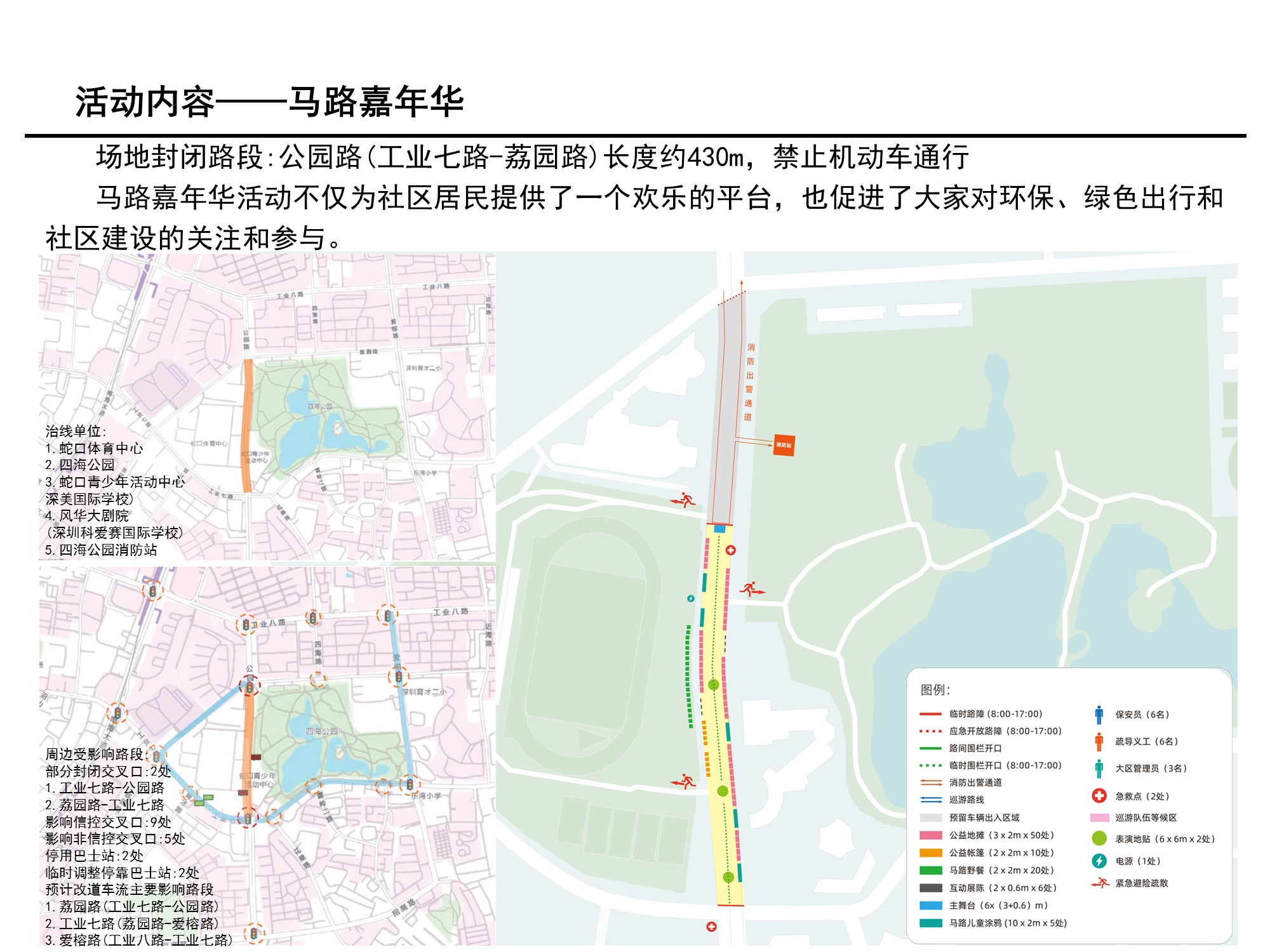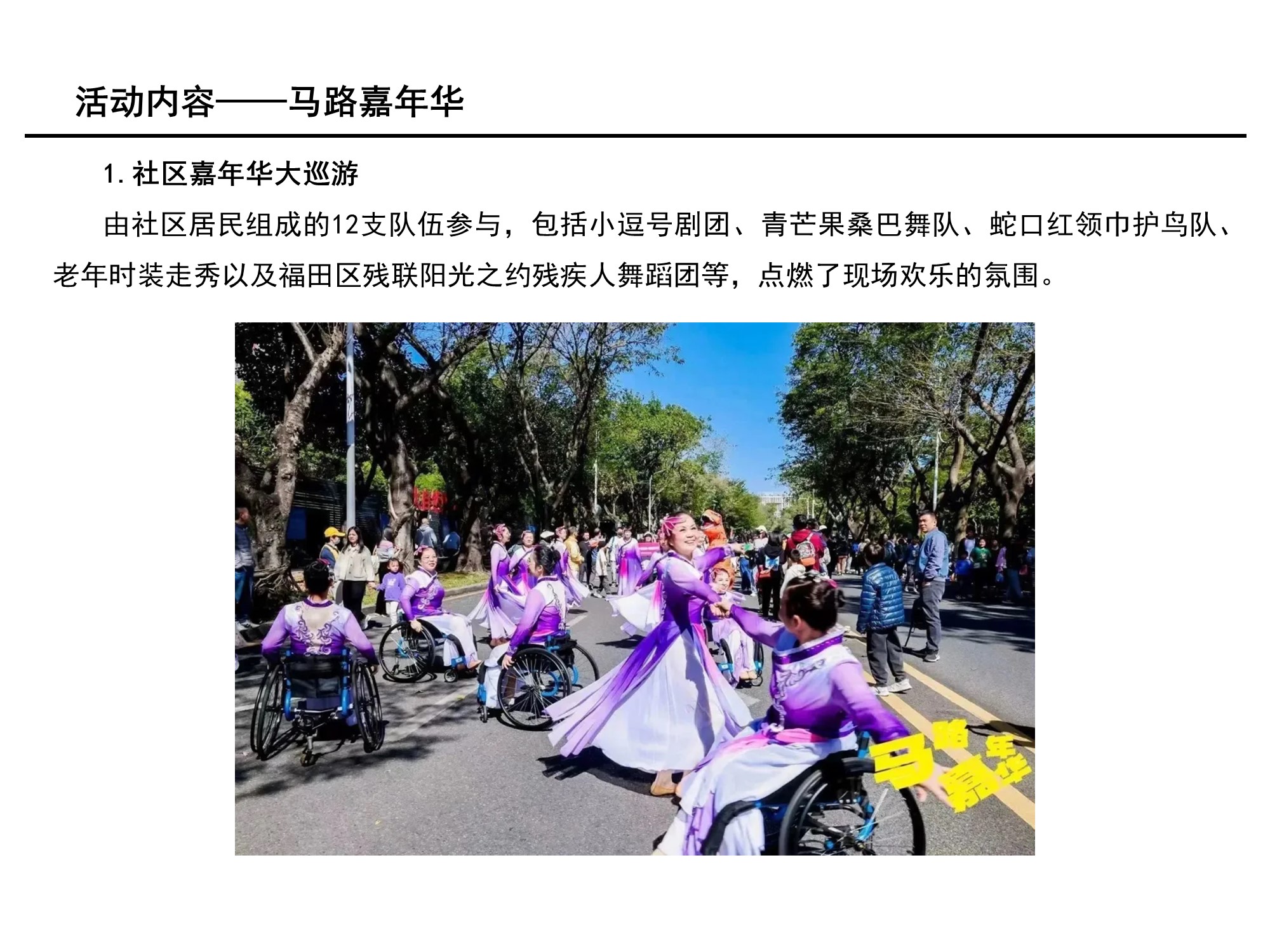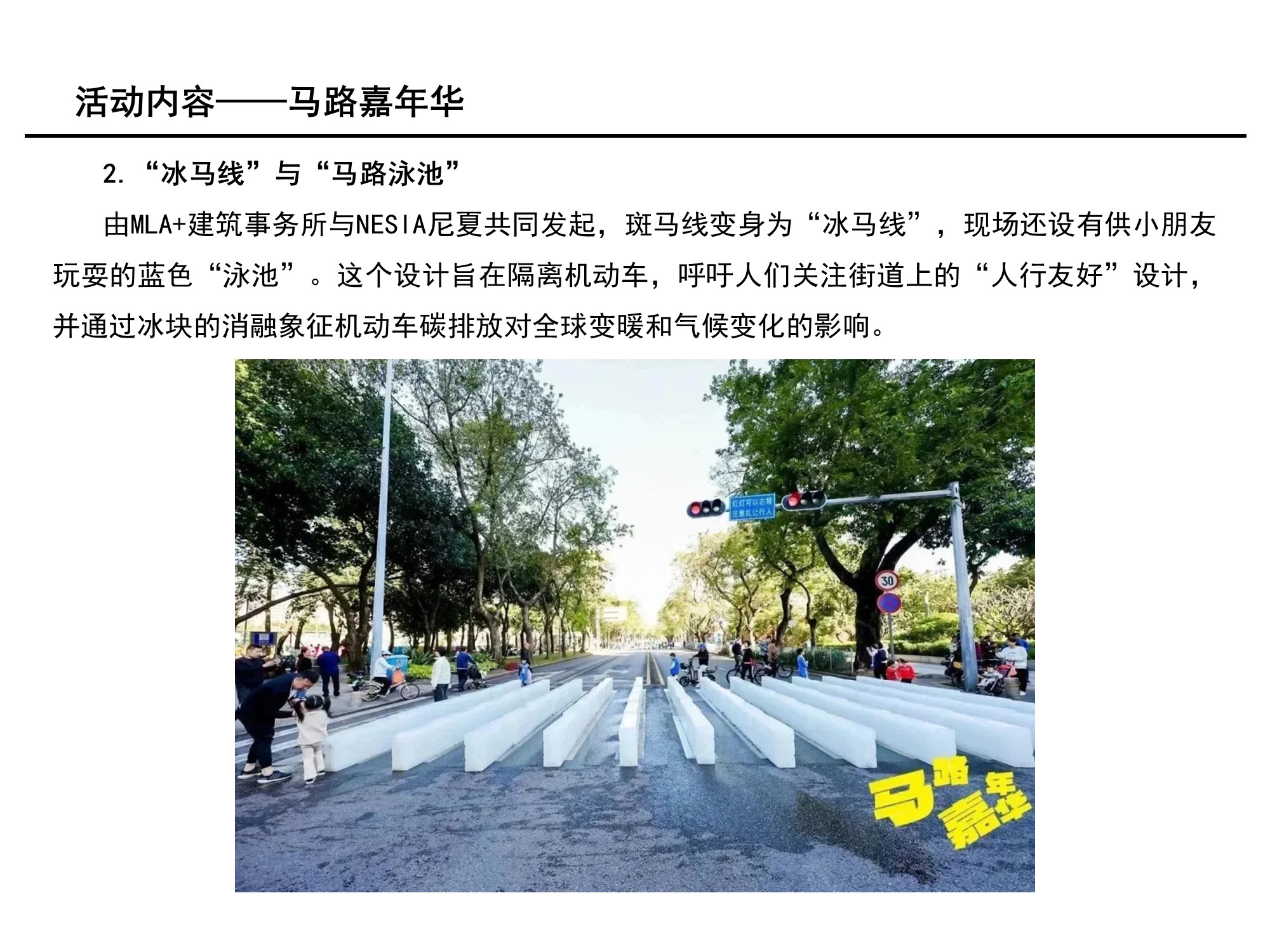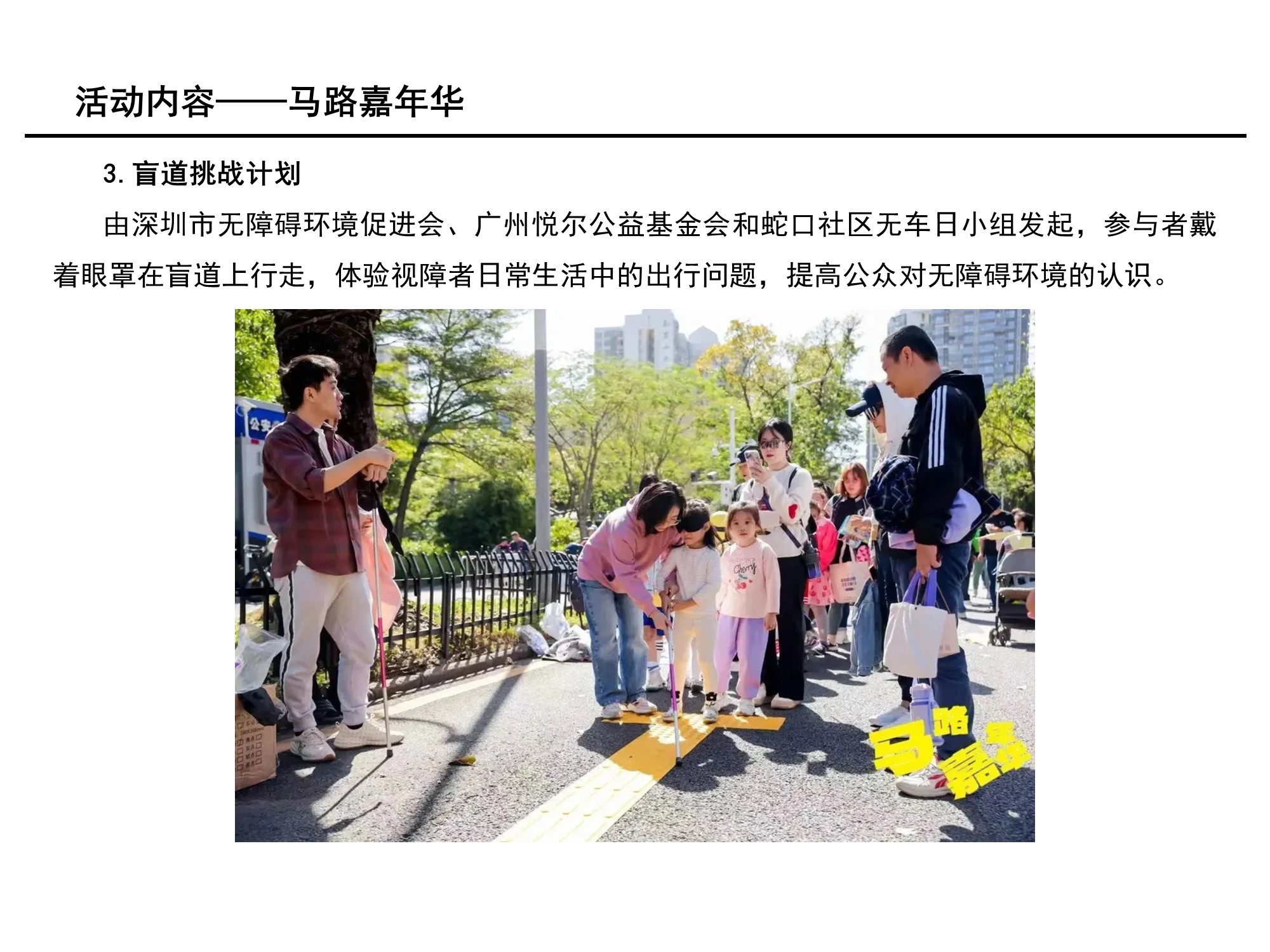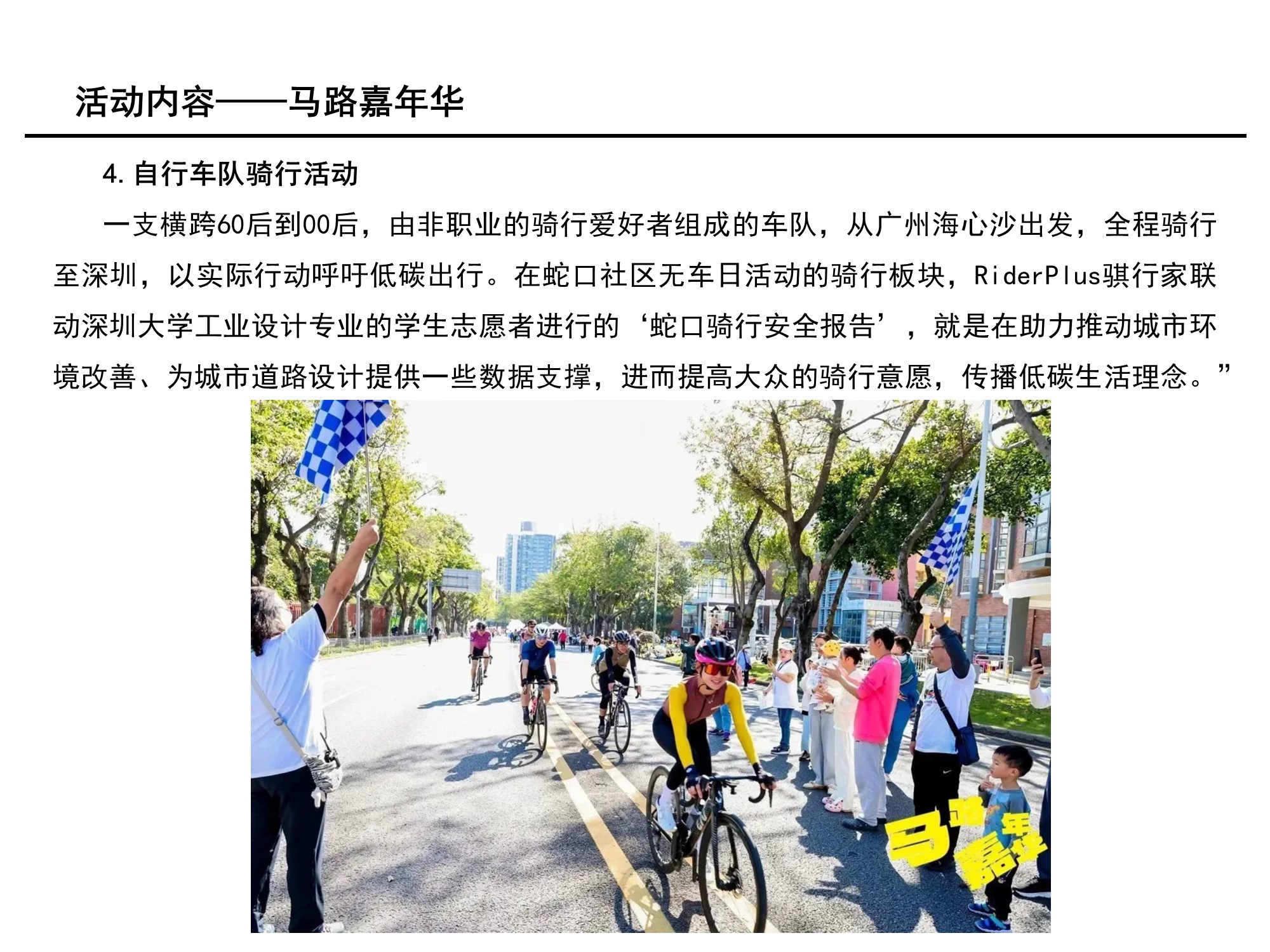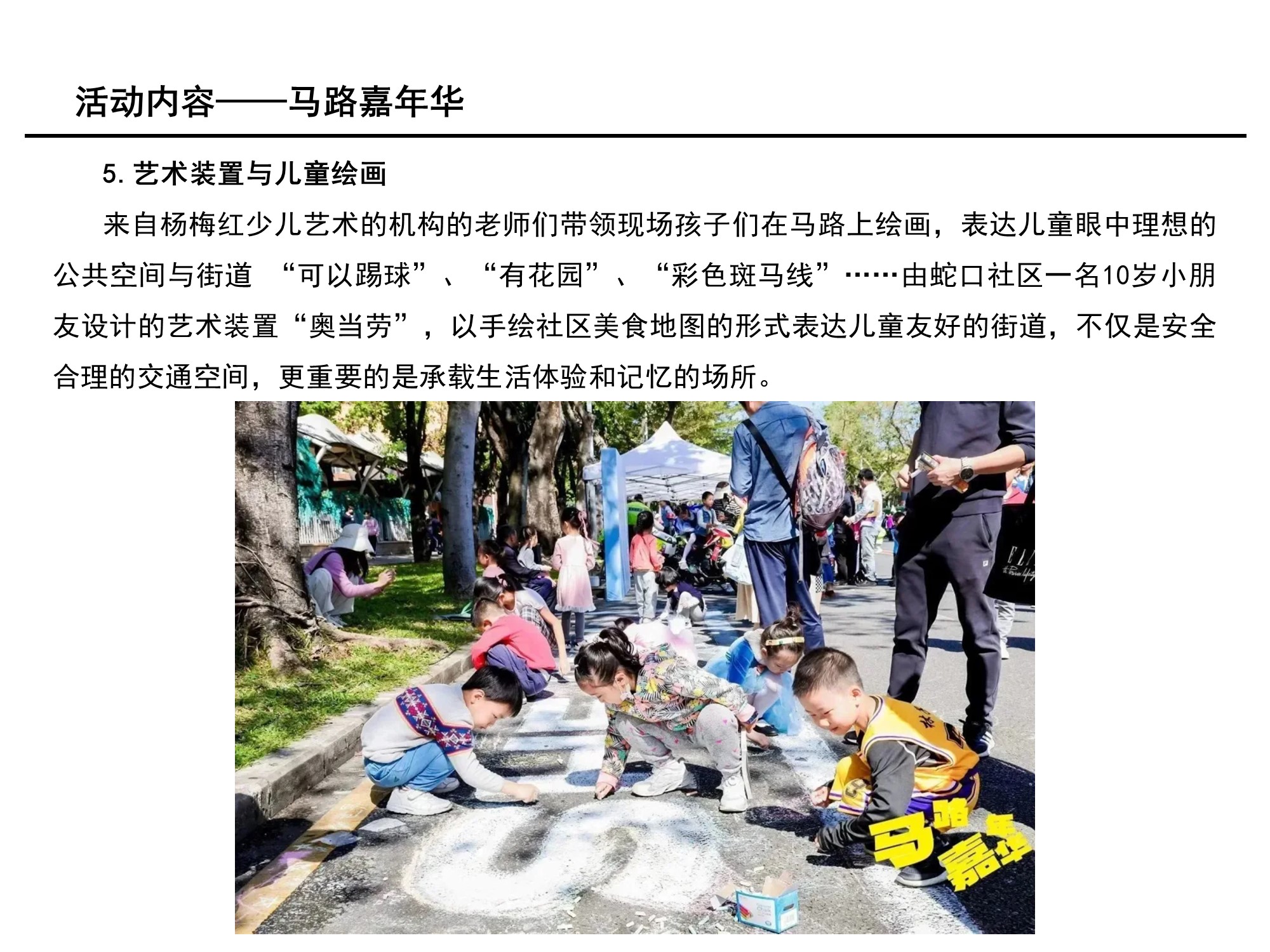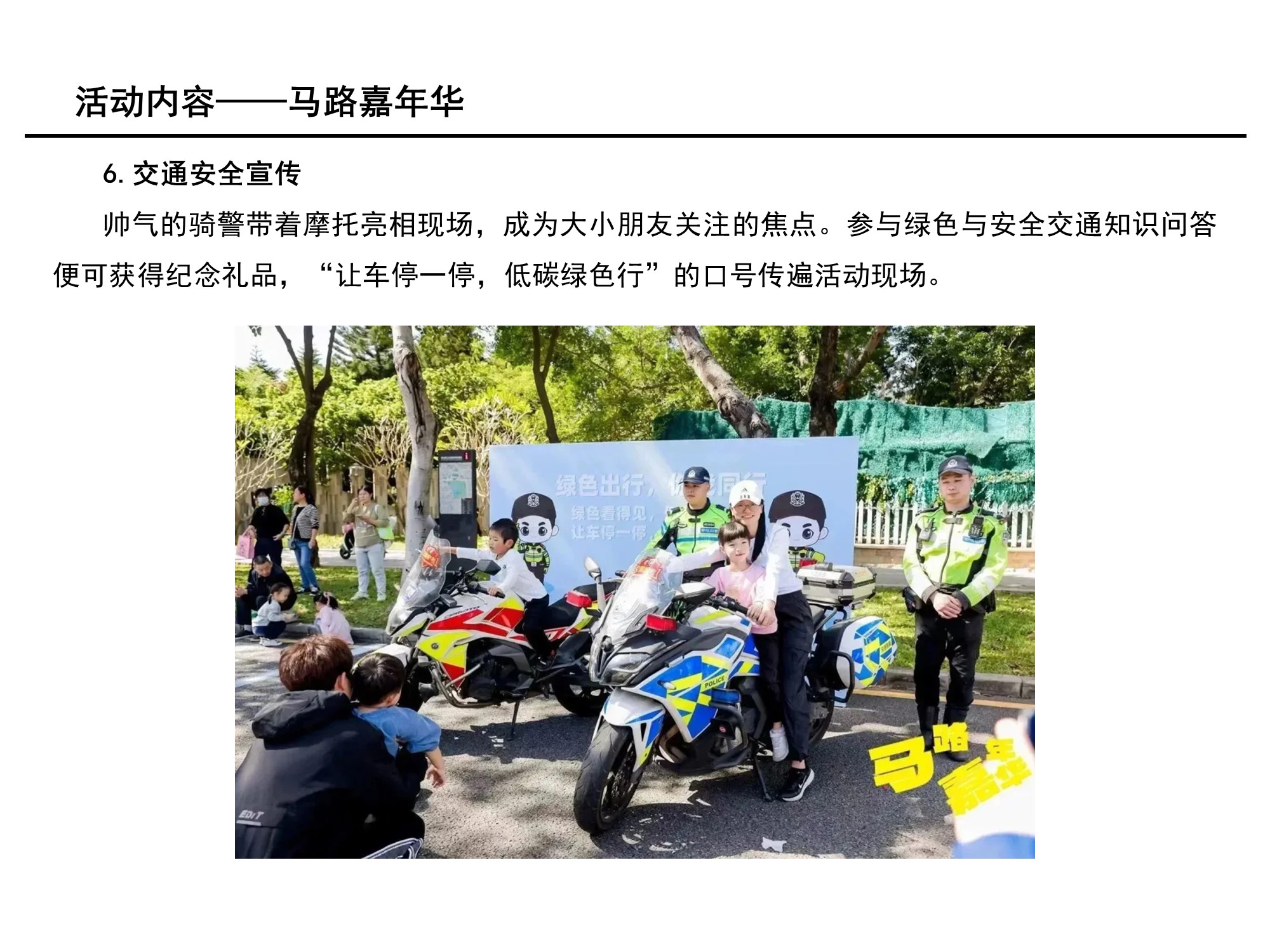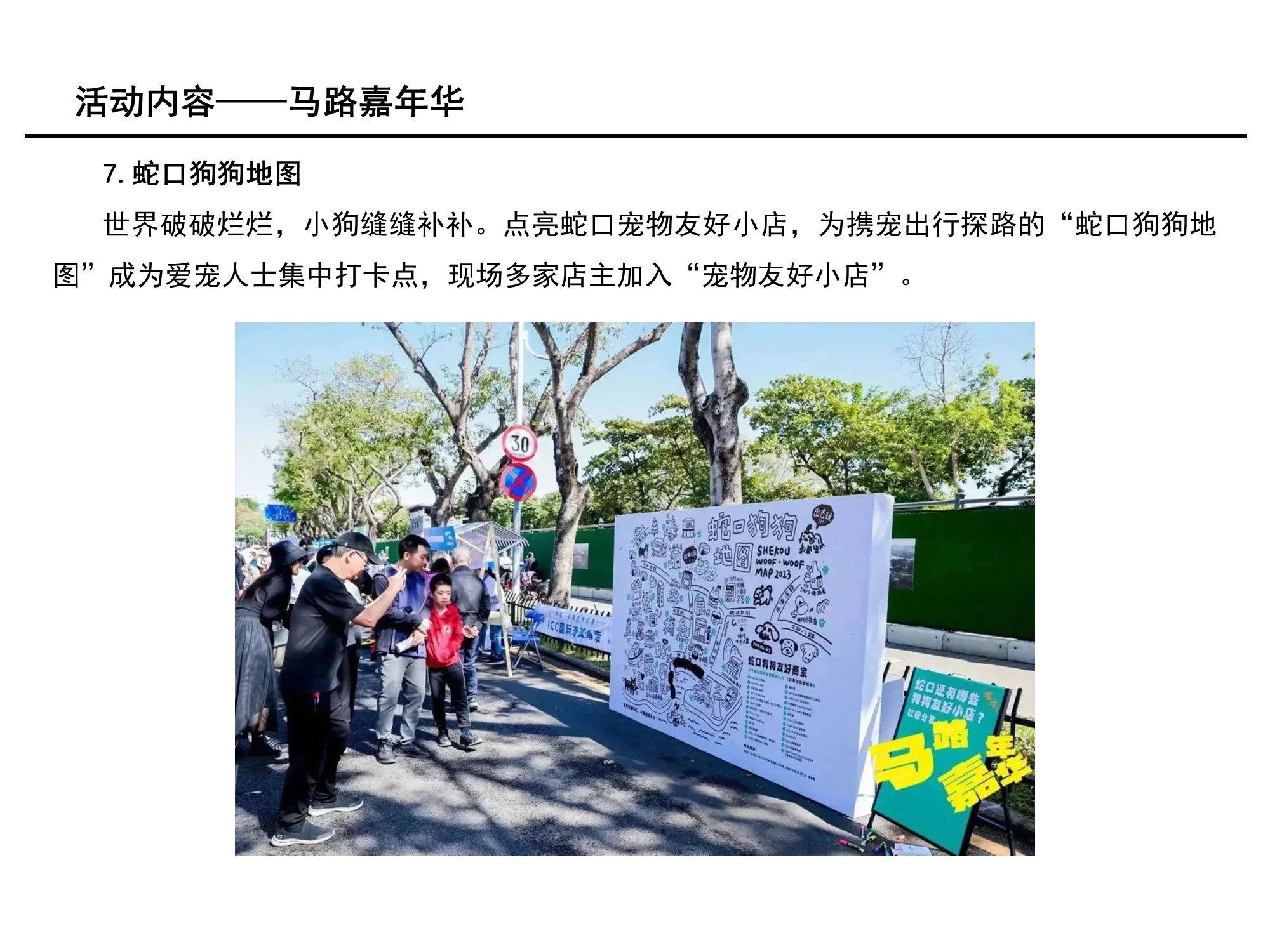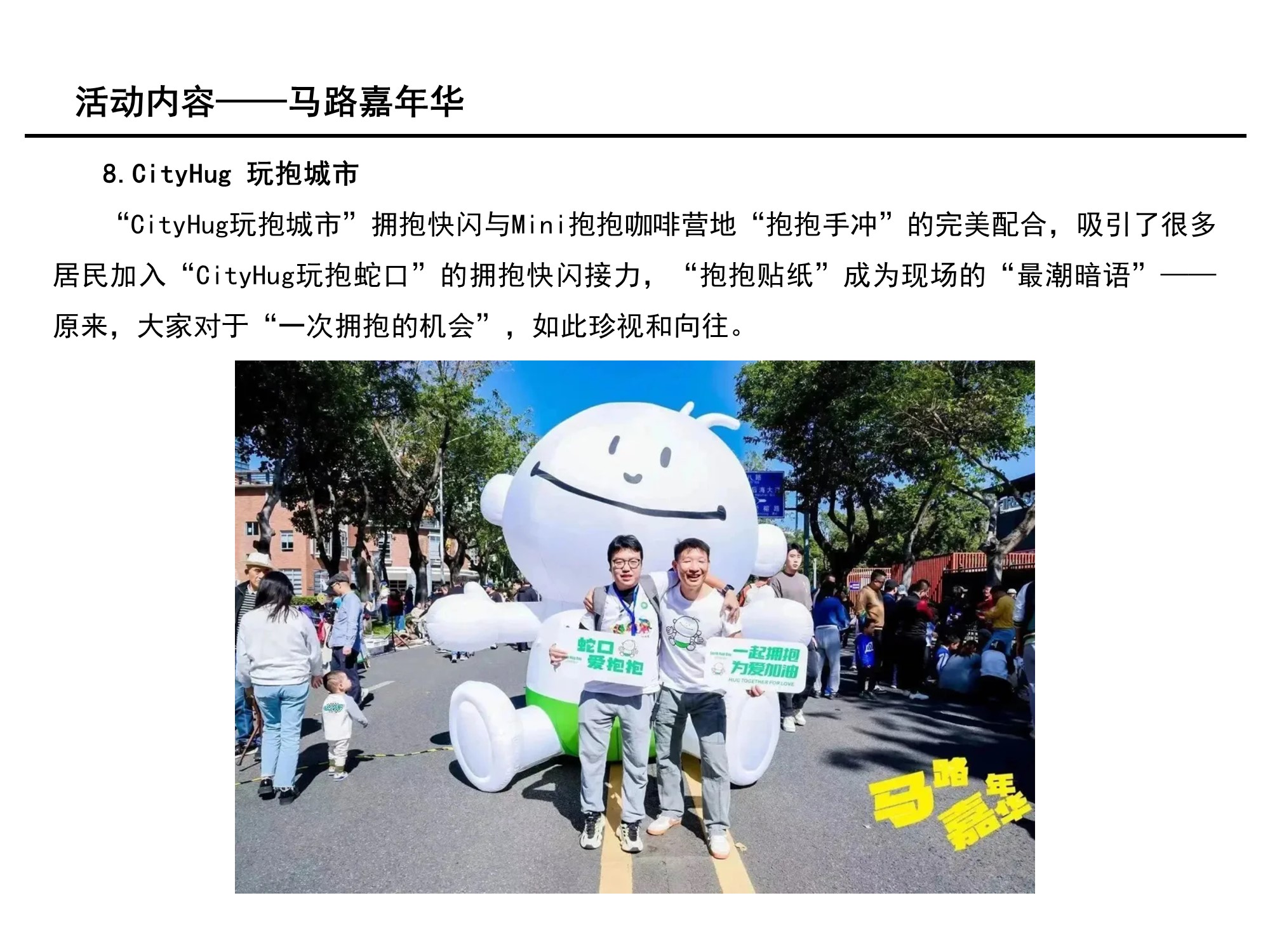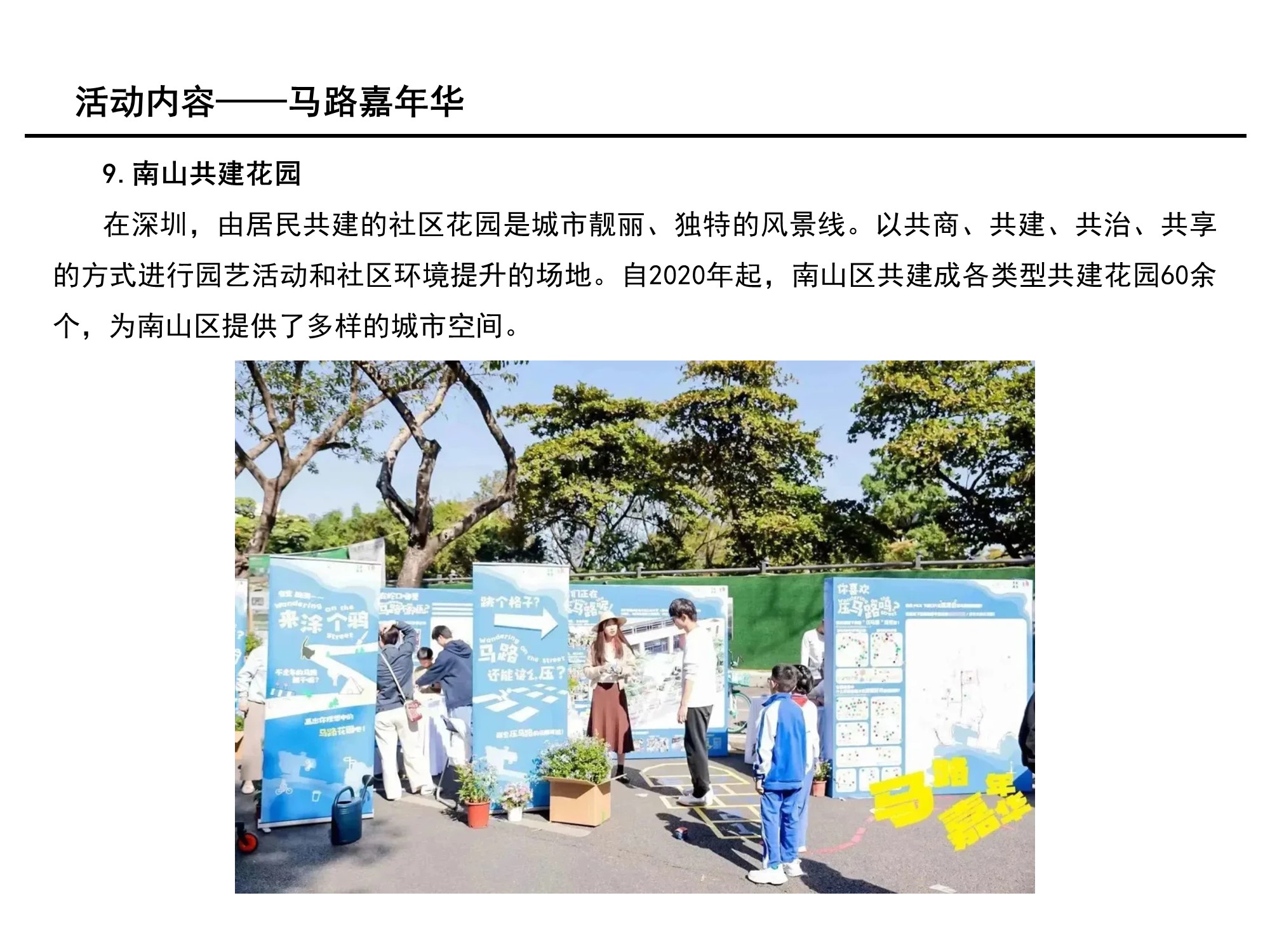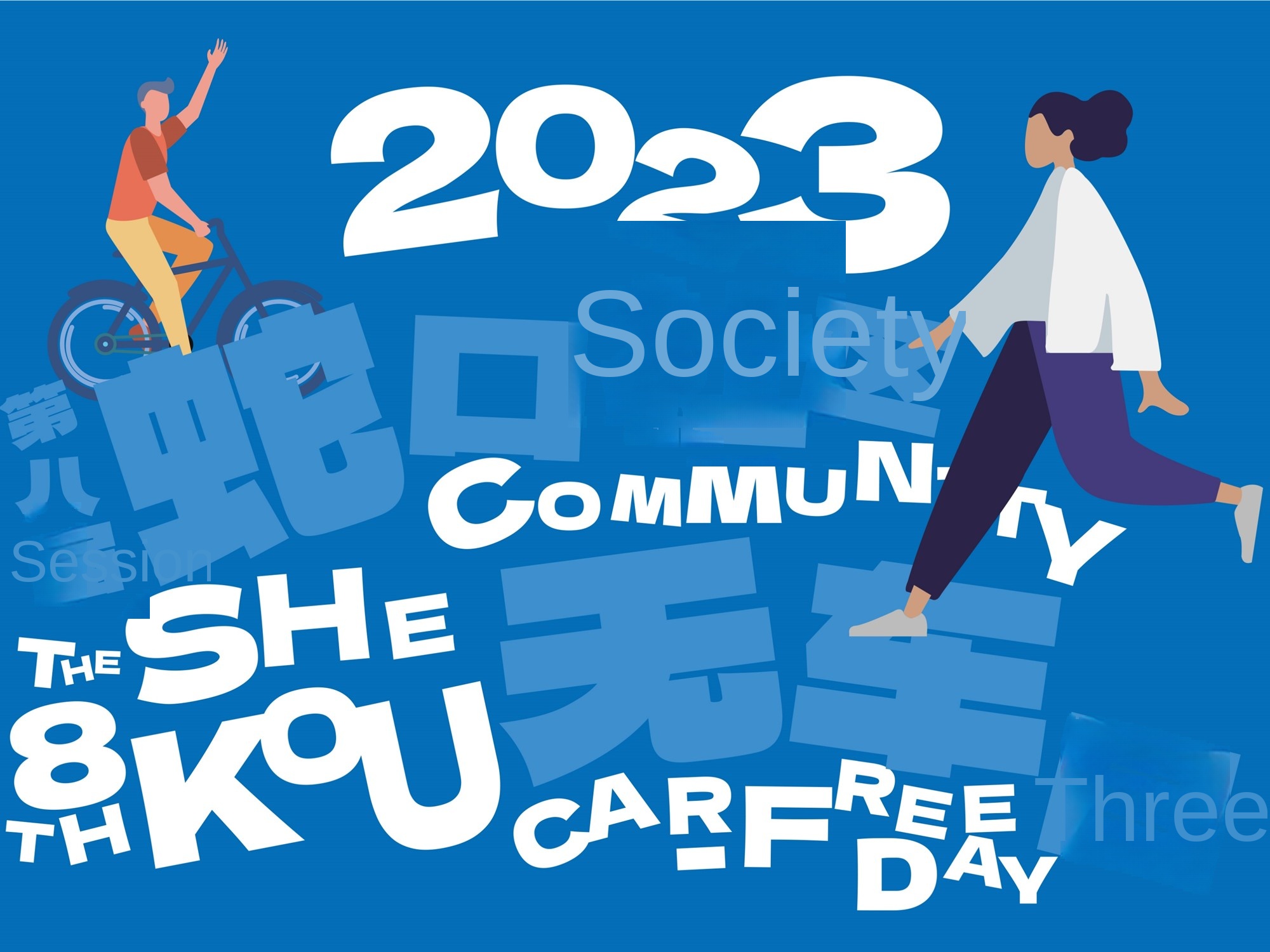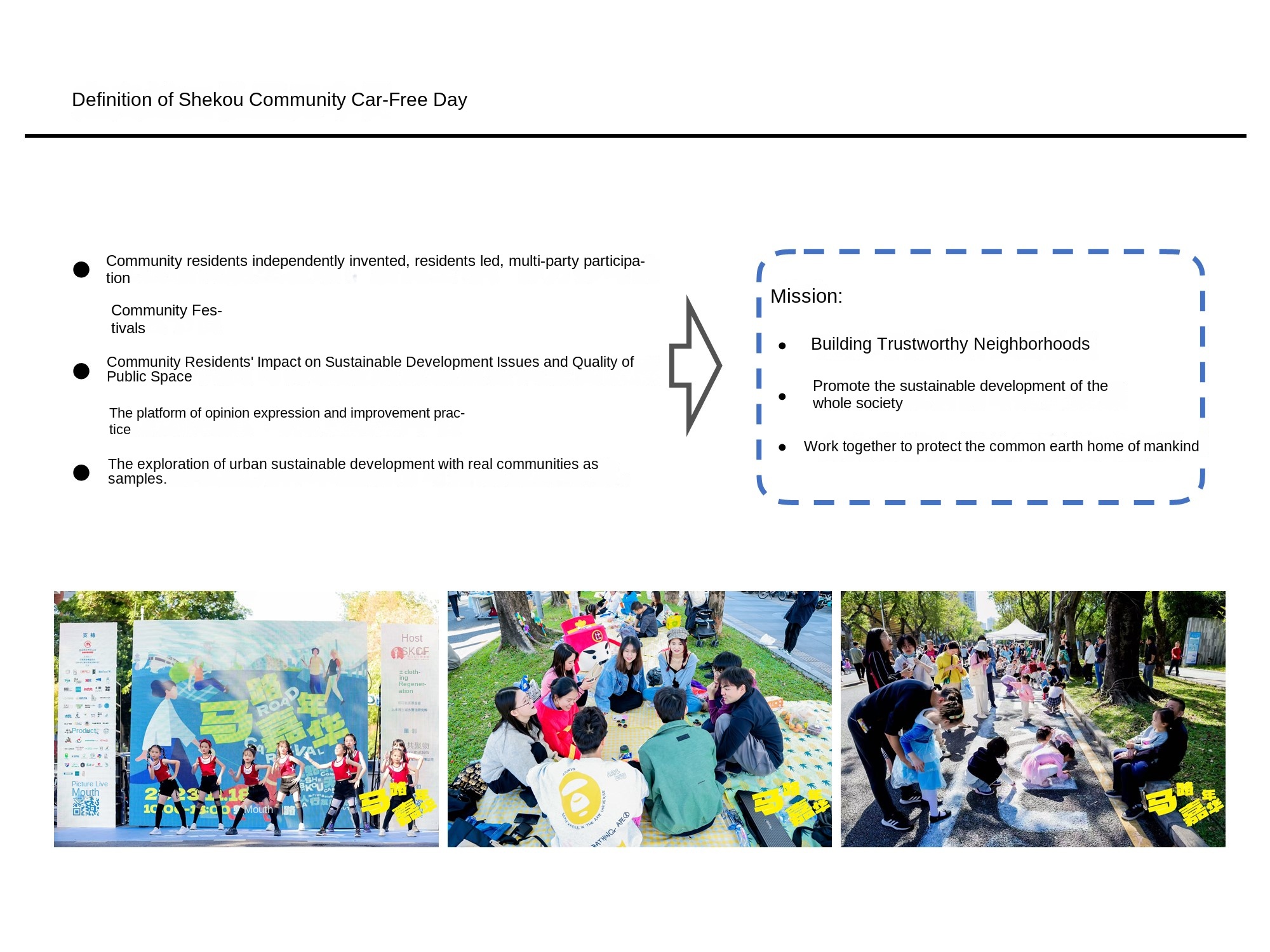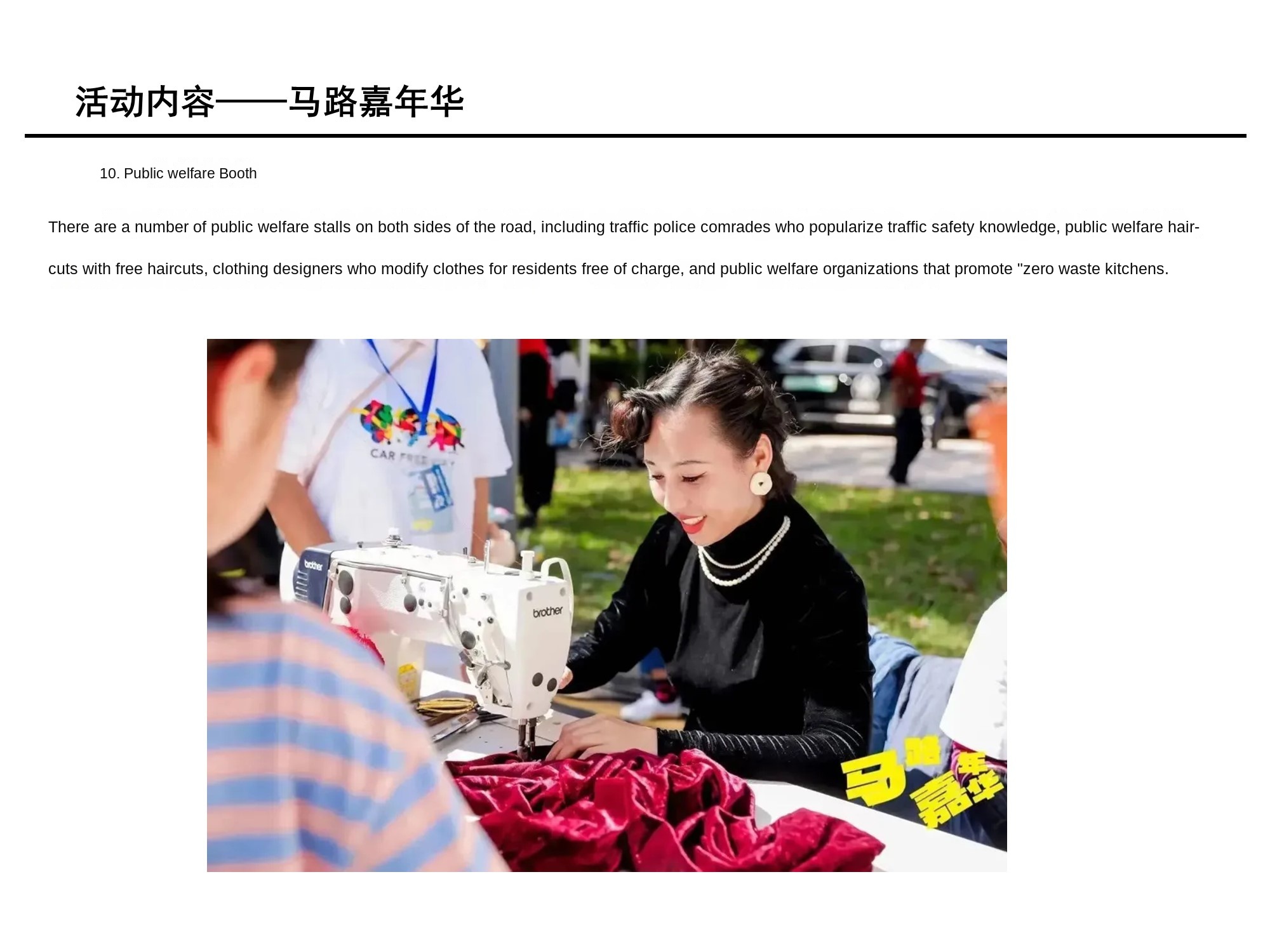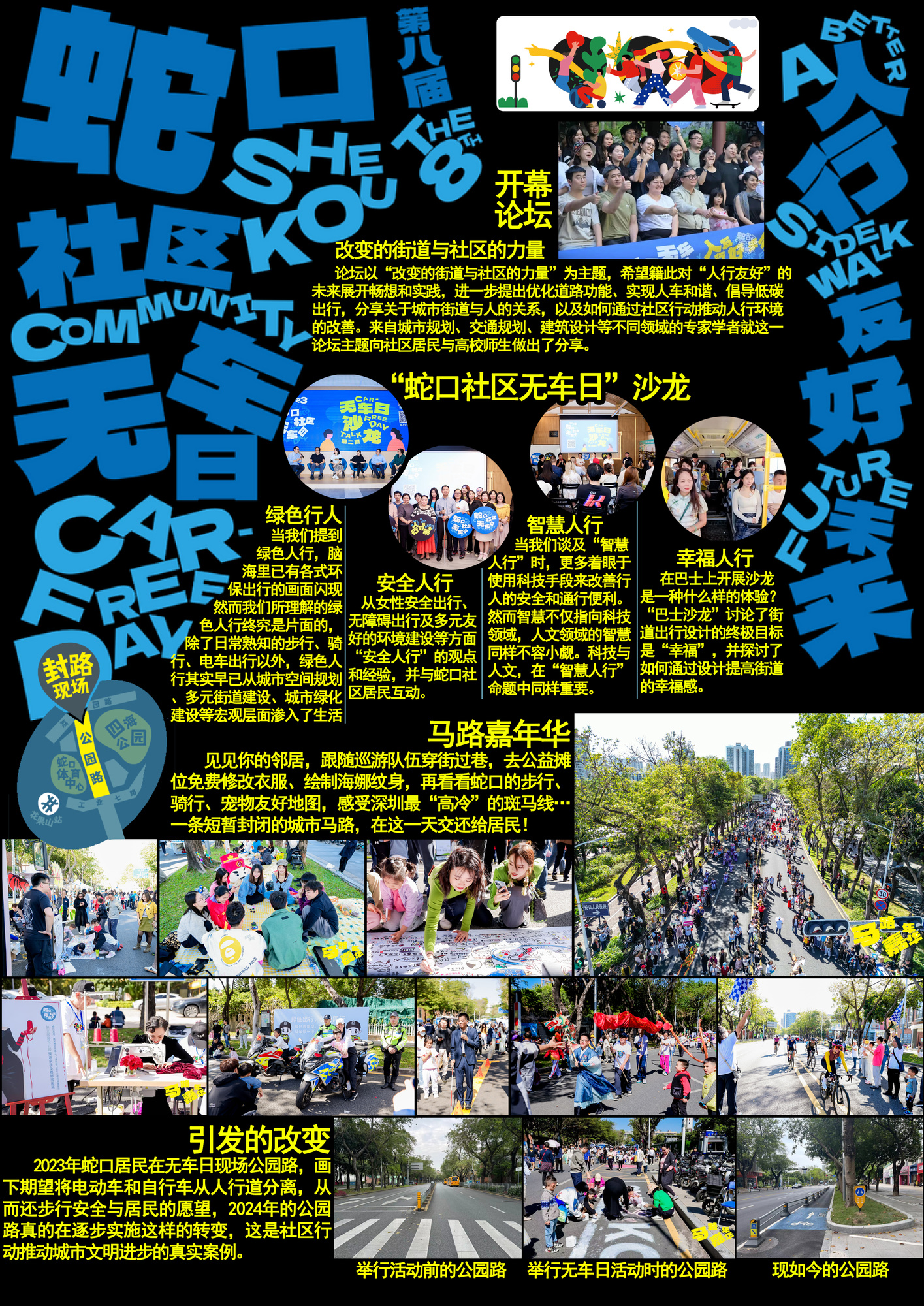
Shekou Community Car Free Day
Shekou Community Car Free Day
Shekou Community Car Free Day
Shekou Community Car Free Day was initiated by senior urban planner Wu Wenyuan and others, and supported by donors of Shekou Community Foundation. It was successfully held in Shekou, Shenzhen on September 22, 2016. China's first car-free day, with extensive participation of community residents.
shekou community car free day is:
Community festivals invented by the residents themselves, led by the residents and participated in by many parties.
A platform for the expression and improvement of community residents' opinions on sustainable development issues and the quality of public space.
An exploration of urban sustainable development with real communities as samples
shekou community car free day mission:
Building Trustworthy Neighborhoods
Promote the sustainable development of the whole society
Join forces to protect the common earth home of mankind
So far, the Shekou Community Car-Free Day has been held for nine consecutive times, and it has become the "cultural business card" and "public welfare business card" of Nanshan District, Shenzhen City and even the Guangdong-Hong Kong-Macao Greater Bay Area.
China's first car-free day to close roads for more than one kilometer
Based on the Shekou community, advocate community residents to build a shared community carnival.
Community public welfare activities that integrate multiple topics such as travel safety, sustainable development, community building, corporate ESG and community linkage.
The Shekou Community Car-Free Day aims to promote low-consumption, low-pollution and low-emission green transportation and create a good-neighborly and friendly community environment.
"Shekou Community Car-Free Day" takes "Shekou Community" as a demonstration and community public welfare as a practice, and is committed to realizing the beautiful vision of the founder of Shekou Industrial Zone, Mr. Yuan Geng, on making Shekou "the most suitable place for human living". In order to create a new "cultural business card" and "public service business card" in Shenzhen and even the Bay Area ".
The development direction of science and technology today is from systematic to distributed, which has led to the transformation of urban space governance from single-center systematic governance to regional and participatory governance. To adapt to the future of public space, its future is not only reflected in the development and changes of the physical environment, but also the common action of people and people, people and space in the space.
The practice of Shekou Community Car-Free Day provides a micro-sample for the exploration of China's future public space, with "community-sustainability-resilience" as its core logic, responding to the needs of urban governance transformation under the wave of distributed technology.
Community-Distributed reconstruction from "physical space" to "relationship network", the essence of future public space is "human-based relationship place", Shekou community car-free day reshapes the social attributes of space through cultural identity-driven way:
1. A stable community that identifies with the spirit of Shekou and the local culture of Shekou constitutes and builds a reliable community.
2. Practical practices and actions continue to attract new members.
Sustainability-the future public space needs to build a "self-growing ecosystem", Shekou community car-free day practice path:
1. Continuity of attention and investment: 9 years of attention and participation of communities, residents, enterprises, etc.
2. Continued exploration: moving from a single transport discussion to a more integrated, sustainable topic
3. The continuous increase of participants: more diverse groups of people, the participation of organizations (schools, enterprises, environmental protection organizations, etc.), the active participation of all sectors of society, to achieve positive sustainability.
Resilience-Future public spaces need to be resilient to black swan events, key resilience strategies for the Shekou community car-free day model:
1. Adaptability: Activities and communities can cope with internal and external changes including climate, environment, community, policy, population, etc.
2. Inheritance and education: grow together. The small residents of the community participate in the car-free day from an early age and set up a special foundation to pay attention to the environment and community issues from an early age, causing children to think about the future lifestyle.
3. Adjustable: flexible response, according to community feedback and actual situation to adjust, establish effective feedback channels to ensure the long-term sustainability of activities
From concept to practice, Shekou community car-free day systematically analyzes its relevance to future public space.
Wu Wenyuan is currently the general manager of Yakeland Design Co., Ltd., a senior planner, the convener of the Low Impact Development Research and Action Group in China, and one of the initiators of "Shekou Community Car-Free Day.
Design concept: to start the design from a place that is messy or confusing, the most effective way is to establish a set of operational research models, so that each result has a systematic logic. In the whole design process, the grasp of data and methods has constructed the basic framework of the scheme. Adhere to the space strategy after the comprehensive study of society, economy, nature and culture, put forward the planning theory with the priority of existence as the primary principle-negative planning, and applied it to a large number of practices. Over the years, because of the improvement of her space strategy, more than 100000 people have kept their homes from being demolished.
In 2009, he presided over the project "Spatial Conceptual Planning and Design of Beiwei District of Lecong Town". In October 2014, he won the DWA(Design for well-beingaward) Space Design Excellence Award at the 6th World Healthy Cities Alliance Conference, won the 2015 China Urbanization Contributor Award, and was invited by the U.S. State Department in 2017 as an IVLP visiting scholar.







